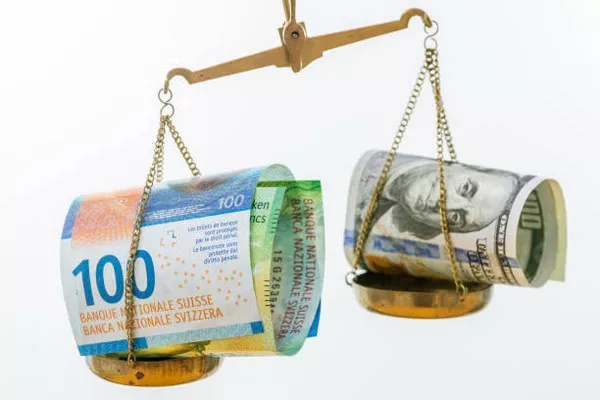The Swiss Franc (CHF) has long been recognized as a symbol of stability and precision in the world of currency. However, with the passage of time, questions have arisen about the validity of old Swiss Franc banknotes and coins. In this article, we will explore the intricacies of this issue, delving into the reasons behind the confusion and providing clarity for those who may be uncertain about the worth of their vintage Swiss currency.
The Evolution of the Swiss Franc:
Before delving into the current status of old Swiss Francs, it’s crucial to understand the evolution of the currency itself. The Swiss Franc has undergone various design changes over the years, with new security features and updated aesthetics introduced to combat counterfeiting.
Historically, the Swiss Franc has been issued in both banknote and coin forms, with denominations ranging from the modest to the substantial. The Swiss National Bank (SNB) is responsible for the issuance and management of the country’s currency, playing a pivotal role in ensuring the stability of the Swiss Franc.
Old Swiss Francs: A Historical Perspective:
Many individuals may find themselves in possession of old Swiss Franc banknotes or coins, either through inheritance, collections, or as remnants from past travels. The question of whether these old Swiss Francs are still valid is a common one, and the answer lies in the specific series and date of issuance.
In Switzerland, the validity of currency is typically determined by the Swiss National Bank. While the SNB strives to maintain the exchangeability of older banknotes, there are instances where certain series or denominations are no longer accepted as legal tender.
Legal Tender vs. Collectible Value:
It’s essential to distinguish between the legal tender value and the collectible value of old Swiss Francs. Legal tender refers to the official status of a currency that is recognized by the government for transactions. Collectible value, on the other hand, is often associated with the historical or numismatic significance of the currency.
In many cases, even if certain old Swiss Francs are no longer accepted as legal tender, they may still hold value to collectors. Rare denominations, limited editions, or those featuring unique designs can command a premium on the collector’s market.
Determining the Validity of Old Swiss Francs:
To ascertain the validity of old Swiss Francs, individuals need to consider several factors. First and foremost, examining the specific series and date of issuance is crucial. The Swiss National Bank periodically issues new banknotes and coins, updating security features and designs to stay ahead of counterfeiters.
If the old Swiss Francs in question belong to a series that is still recognized by the Swiss National Bank, there is a good chance they are still valid. However, if the series has been officially withdrawn or demonetized, the banknotes or coins may no longer be accepted for transactions.
Key Dates and Series:
As of the last available information up to my knowledge cutoff in January 2022, the eighth series of Swiss Franc banknotes, introduced in 1995, was gradually being replaced by the ninth series, starting in 2016. The Swiss National Bank has a comprehensive guide on its official website, detailing the various denominations and series in circulation.
It’s important for individuals to cross-reference the series and denominations of their old Swiss Francs with the official information provided by the Swiss National Bank. This process helps in determining whether the currency is still valid or if it has been officially withdrawn.
Exchange and Redemption:
For individuals holding old Swiss Francs that are no longer considered legal tender, there is still hope. The Swiss National Bank often provides a grace period during which individuals can exchange or redeem their outdated currency. This grace period allows for a smooth transition and ensures that individuals are not left with worthless banknotes or coins.
The exchange process typically involves visiting a local bank or the Swiss National Bank itself, where individuals can swap their old Swiss Francs for the current valid currency. However, it’s crucial to be aware of any deadlines set by the Swiss National Bank for the redemption of specific series.
Communication and Public Awareness:
To avoid confusion and ensure that individuals are well-informed about the status of their currency, the Swiss National Bank actively communicates changes in currency series and redemption procedures. Public awareness campaigns, official announcements, and educational materials are often disseminated to keep the general populace informed.
For those living abroad or unable to visit a physical bank in Switzerland, some procedures may allow for mail-in redemption services. It is advisable to check the official website of the Swiss National Bank for the most up-to-date information and instructions on how to proceed with the exchange or redemption process.
See Also: CHF: History, Unique Features & Swiss Economy
Conclusion:
In conclusion, the validity of old Swiss Francs hinges on various factors, including the specific series, denominations, and the policies of the Swiss National Bank. While certain old Swiss Francs may no longer be accepted as legal tender, they may still hold value as collectibles.
To navigate this terrain effectively, individuals should stay informed about the latest developments and official guidelines provided by the Swiss National Bank. By understanding the history and evolution of the Swiss Franc, as well as keeping abreast of communication from the official authorities, individuals can confidently determine the status and worth of their old Swiss Franc banknotes and coins.


